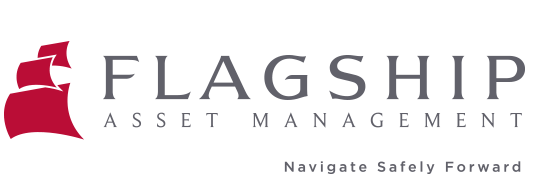
25 Jun Defence Stocks Provide Diversification in an Era of Accelerating European Rearmament
As published in Business Day on 26 June 2025 by JD Hayward
For defence investors, the convergence of immediate military crises and structural geopolitical realignment has created the most compelling investment environment in decades. It promises to be not just a cyclical opportunity but a fundamental reshaping of the global security architecture that will drive sustained defence spending growth for years to come.
The combination of US-Iran nuclear brinksmanship, Trump’s demands for 5% NATO defence spending, and Europe’s historic fiscal pivot toward rearmament is driving unprecedented demand for military capabilities.
The weekend of June 21, 2025, marked a dangerous escalation in global tensions when the US launched “Operation Midnight Hammer” – targeted strikes on Iran’s nuclear facilities using B-2 stealth bombers and Tomahawk missiles. This dramatic intervention followed Israel’s sustained assault on Iranian military infrastructure.
With Iran’s promised retaliation and concerns mounting about potential disruption to global shipping lanes through the Strait of Hormuz, many analysts are warning this could be the spark that ignites a broader Middle Eastern conflict.
These developments come against the backdrop of an already volatile global security environment. Russia’s war in Ukraine continues to grind on, China maintains increasingly aggressive rhetoric toward Taiwan, and more than 100 armed conflicts are currently active worldwide, according to the Geneva Academy. The spectre of nuclear-armed superpowers in direct confrontation has returned to haunt global markets and policymakers alike.
Simultaneously, President Trump’s inauguration has fundamentally reshaped transatlantic security arrangements. His demand for NATO allies to spend 5% of their GDP on defence, more than doubling the current 2% target, combined with explicit questioning of America’s security guarantees, has forced European nations into an urgent scramble for defence spending.
For investors, this convergence of immediate geopolitical crises and structural shifts in global security architecture has created unprecedented opportunities in defence stocks.
The Trump Factor: From 2% to 5% GDP Defence Spending
Trump’s demand for 5% GDP defence spending was labelled “unrealistic” by defence ministers, but NATO Secretary-General Rutte has endorsed the target and expects adoption at June’s summit. Unlike Trump’s first term, his current administration includes stronger voices pushing for reduced US commitments to European defence, making the threats credible.
Germany has led the charge in plotting out a path to significantly higher defence spending. In March 2025, parliament approved exempting defence spending above 1% of GDP from constitutional “debt brake” rules, alongside a €500 billion infrastructure fund. Defence Minister Pistorius seeks over €60 billion annually – a €10 billion increase. Germany became the world’s fourth-largest military spender at $88.5 billion in 2024, finally meeting NATO’s 2% target. Goldman Sachs projects defence spending reaching 3.5% of GDP with positive eurozone spillovers.
However, the defence spending momentum extends far beyond Germany. Poland, who shares a border with Russian enclave Kaliningrad, leads at 4.2% of GDP, with military spending up 31% to $38 billion in 2024. Defence outlays in Central and Western Europe now exceed Cold War levels, rising 16% from 2022 to 2023 alone. NATO’s Rutte calls for a “quantum leap”, including 400% increases in air defence and thousands more armoured vehicles.
Multiple Avenues for Defence Sector Exposure
The defence landscape offers several investment pathways to capture the growth potential of the sector. Investors can build exposure to traditional arms companies, like Rheinmetall and BAE Systems, which benefit directly from European rearmament. Technology systems are also likely to benefit, with companies like Hensoldt, Thales, and Kongsberg providing sophisticated radar and electronic warfare capabilities. Meanwhile, diversified aerospace operators, such as Rolls-Royce, Airbus, and Embraer, balance defence and commercial exposure. A further segment worth considering is companies that provide infrastructure support, with NATO’s 1.5% GDP allocation to defence infrastructure set to benefit logistics and transportation companies.
The Flagship Global Equity Fund’s 6.7% allocation to defence stocks has delivered strong returns, with our key holdings yielding returns of around 40% or more year to date. Howmet Aerospace is approaching all-time highs, Kongsberg Gruppen has delivered an almost 100% gain over the past 12 months, and Rolls-Royce is benefiting from both civil and defence order books.
These gains reflect not just geopolitical tensions but fundamental structural tailwinds. Recent events like the Israel-Iran strikes and “Operation Midnight Hammer” have demonstrated the continued relevance of advanced military technology, from B-2 stealth bombers to Tomahawk missiles.
Defence Sector Outlook Becomes Structural, Not Cyclical
Unlike previous cycles driven by specific conflicts, today’s environment reflects a fundamental recalibration of European security. With NATO allies preparing for potential US troop reductions, European defence budgets are entering a sustained period of expansion.
Key catalysts that lie ahead include NATO’s June summit formalising 5% GDP targets; German budget implementation; EU defence integration, and the ongoing geopolitical tensions.
Defence investments provide essential portfolio diversification in an increasingly unstable world. The current European rearmament represents the most significant peacetime military buildup since the 1950s, supported by both political necessity and fiscal capacity. For investors, this represents a generational opportunity in a sector entering its strongest growth phase in decades.


















